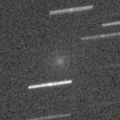
|
It will approach to the Sun down to 0.45 a.u. on Oct. 10. But it is not observable now. It was 12.5-13.0 mag on Sept. 24 (Michael Jager). It will never be observable again in the Northern Hemisphere. In the Southern Hemisphere, it will appear in the evening sky at 14 mag in November, but it keeps extremely low after that. It has a very similar orbit to Comet C/1915 R1 ( Mellish ).
Date(TT) R.A. (2000) Decl. Delta r Elong. m1 Best Time(A, h)
Oct. 1 12 21.52 16 49.5 1.323 0.515 20 11.2 4:30 (246, -4)
Oct. 8 13 15.87 8 32.3 1.334 0.455 15 10.7 18:58 (103, -5)
|

|
It brightened up to 6.2 mag in June (June 24, Marco Goiato). Now it is fading. It has already faded down to 13.3 mag (Sept. 28, Chris Wyatt). It it not observable already in the Northern Hemisphere. It will be unobservable soon also in the Southern Hemisphere.
Date(TT) R.A. (2000) Decl. Delta r Elong. m1 Best Time(A, h)
Oct. 1 14 29.51 -28 0.1 3.326 2.609 37 11.8 19:07 ( 61, -8)
Oct. 8 14 32.93 -28 8.8 3.476 2.684 32 12.0 18:58 ( 63,-11)
|
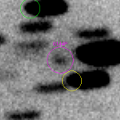
|
Now it is bright as 12.0 mag (Sept. 27, Chris Wyatt). It keeps locating extremely low until November in the Southern Hemisphere. Juan Jose Gonzalez reported it so bright as 8.9 mag on Sept. 29.
Date(TT) R.A. (2000) Decl. Delta r Elong. m1 Best Time(A, h)
Oct. 1 10 1.58 9 29.0 2.111 1.474 38 11.9 4:30 (272, 19)
Oct. 8 10 21.32 7 27.7 2.105 1.495 40 12.1 4:36 (276, 21)
|
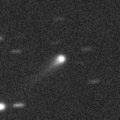
|
It brightened very rapidly and became brighter than expected. Now it is very bright as 12.7 mag (Sept. 28, Chris Wyatt). It will be unobservable in November in the Southern Hemisphere, or in December in the Northern Hemisphere. Juan Jose Gonzalez reported it so bright as 9.7 mag on Sept. 28.
Date(TT) R.A. (2000) Decl. Delta r Elong. m1 Best Time(A, h)
Oct. 1 16 0.68 -16 30.9 2.411 1.987 53 12.3 19:07 ( 56, 15)
Oct. 8 16 17.02 -16 48.0 2.463 1.985 50 12.3 18:58 ( 56, 15)
|
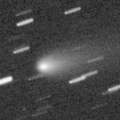
|
Now it is 12.1 mag (Sept. 27, Chris Wyatt). It will be getting higher gradually after this, but it will be fading. Juan Jose Gonzalez reported it so bright as 9.5 mag on Sept. 9.
Date(TT) R.A. (2000) Decl. Delta r Elong. m1 Best Time(A, h)
Oct. 1 9 29.23 6 20.0 1.942 1.439 45 12.4 4:30 (280, 24)
Oct. 8 9 47.52 3 49.5 1.938 1.467 47 12.6 4:36 (284, 26)
|
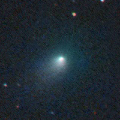
|
Now it is 13.1 mag (Sept. 19, Thomas Lehmann). It will be fading gradually after this. In the Northern Hemisphere, it keeps low after this. In the Southern Hemisphere, it will be getting lower after this, and it will be unobservable in December.
Date(TT) R.A. (2000) Decl. Delta r Elong. m1 Best Time(A, h)
Oct. 1 16 32.49 -27 19.7 1.847 1.648 62 12.8 19:07 ( 43, 12)
Oct. 8 16 54.65 -28 21.2 1.914 1.673 60 13.0 18:58 ( 42, 12)
|
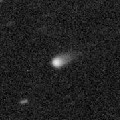
|
Now it is 13.3 mag (Sept. 5, Alan Hale). It is expected to brighten up to 7 mag in 2017 summer. In the Northern Hemisphere, it keeps observable in good condition until the highlight while the comet will be brightening. In the Southern Hemisphere, it is not observable until early 2017.
Date(TT) R.A. (2000) Decl. Delta r Elong. m1 Best Time(A, h)
Oct. 1 11 14.93 48 22.8 4.005 3.512 54 13.2 4:30 (227, 25)
Oct. 8 11 29.42 47 52.3 3.887 3.445 56 13.0 4:36 (229, 27)
|

|
It brightened up to 11 mag from spring to summer. Now it is not observable. It will be observable at 16 mag again in 2017 spring.
Date(TT) R.A. (2000) Decl. Delta r Elong. m1 Best Time(A, h)
Oct. 1 13 47.13 -8 47.4 2.652 1.746 20 13.1 19:07 ( 83, -5)
Oct. 8 14 5.49 -10 27.4 2.697 1.774 18 13.3 18:58 ( 81, -6)
|
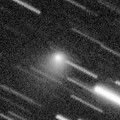
|
Now it is so bright as 12.6 mag (Sept. 27, Maik Meyer). It will be low in November, but it keeps observable in good condition for a while.
Date(TT) R.A. (2000) Decl. Delta r Elong. m1 Best Time(A, h)
Oct. 1 19 6.32 -0 29.8 1.486 1.919 99 13.3 19:07 ( 18, 53)
Oct. 8 18 56.67 -4 59.2 1.662 1.938 89 13.6 18:58 ( 26, 46)
|

|
It brightened up to 8-9 mag from winter to spring. Now it is fading. It has already faded down to 12.9 mag (July 23, Chris Wyatt). It is not observable now. It will appear in the morning sky at 14 mag in November in the Northern Hemisphere, or in December in the Southern Hemisphere.
Date(TT) R.A. (2000) Decl. Delta r Elong. m1 Best Time(A, h)
Oct. 1 12 28.96 2 10.9 4.865 3.869 5 13.4 4:30 (257,-15)
Oct. 8 12 34.22 0 55.0 4.912 3.927 8 13.5 4:36 (262,-10)
|

|
Now it is faint as 17.1 mag (Sept. 29, Jean-Francois Soulier). It is observable in excellent condition in the Southern Hemisphere.
Date(TT) R.A. (2000) Decl. Delta r Elong. m1 Best Time(A, h)
Oct. 1 19 16.20 -24 56.8 5.656 5.900 99 13.5 19:07 ( 9, 30)
Oct. 8 19 17.79 -24 46.1 5.766 5.898 92 13.6 18:58 ( 13, 29)
|

|
It keeps unobservable for a long time. It will appear in the morning sky in December, when the comet will be fainter than 15 mag.
Date(TT) R.A. (2000) Decl. Delta r Elong. m1 Best Time(A, h)
Oct. 1 11 49.34 -4 39.7 2.472 1.497 10 13.7 4:30 (268,-11)
Oct. 8 12 10.79 -6 36.7 2.502 1.533 10 13.8 4:36 (272, -9)
|
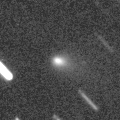
|
It had been lost for a long time over 200 years since its discovery in 1783. It brightened rapidly, and reached up to 13.9 mag in September (Spet. 1, Sandor Szabo). It will be fading after this. It has already faded down to 14.7 mag (Sept. 26, Thomas Lehmann). It is observable in excellent condition for a while in the Northern Hemisphere. It will be unobservable in November in the Southern Hemisphere.
Date(TT) R.A. (2000) Decl. Delta r Elong. m1 Best Time(A, h)
Oct. 1 5 29.05 17 35.5 1.246 1.793 105 13.9 4:30 (345, 72)
Oct. 8 5 32.41 21 1.5 1.180 1.803 111 13.9 4:25 ( 0, 76)
|
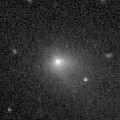
|
Now it is 13.0 mag (Sept. 1, Seiichi Yoshida). Distant object, but it keeps observable at 13-14 mag for a long time from 2015 to 2016.
Date(TT) R.A. (2000) Decl. Delta r Elong. m1 Best Time(A, h)
Oct. 1 0 43.62 -2 26.1 3.974 4.970 173 14.0 0:05 ( 0, 53)
Oct. 8 0 41.44 -3 0.6 3.991 4.979 170 14.0 23:31 ( 0, 52)
|

|
Now it is 14.2 mag (Sept. 24, Kunihiro Shima). It will be fading gradually after this. It will be unobservable soon. But it will appear in the morning sky again at 16 mag in winter.
Date(TT) R.A. (2000) Decl. Delta r Elong. m1 Best Time(A, h)
Oct. 1 15 41.39 14 30.5 3.942 3.398 50 14.4 19:07 ( 86, 31)
Oct. 8 15 47.01 12 29.2 4.051 3.441 46 14.6 18:58 ( 86, 27)
|
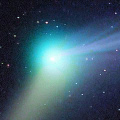
|
It brightened up to 6 mag from autumn to winter. Now it is fading. It has already faded down to 14.6 mag (Sept. 9, Katsumi Yoshimoto). It is observable in good condition in the Northern Hemisphere. It is not observable after this in the Southern Hemisphere.
Date(TT) R.A. (2000) Decl. Delta r Elong. m1 Best Time(A, h)
Oct. 1 5 49.71 54 32.1 4.216 4.473 98 14.6 4:30 (197, 69)
Oct. 8 5 41.99 55 16.3 4.181 4.545 105 14.7 4:36 (180, 70)
|
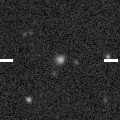
|
Now it is 16.4 mag (Aug. 12, Thomas Lehmann). It will be unobservable temporarily from summer to autumn. Then it will appear in the morning sky at 13 mag in December. It is expected to brighten up to 7 mag in 2017 spring. But it locates somewhat low at the high light.
Date(TT) R.A. (2000) Decl. Delta r Elong. m1 Best Time(A, h)
Oct. 1 12 35.50 -7 28.2 4.283 3.286 4 14.8 19:07 ( 94,-19)
Oct. 8 12 44.32 -8 19.1 4.205 3.208 3 14.7 4:36 (268,-17)
|
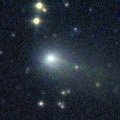
|
It brightened up to 12.5 mag in summer (Aug. 3, Marco Goiato). Now it is fading. It has already faded down to 14.0 mag (Sept. 28, Chris Wyatt). It keeps observable in good condition for a while.
Date(TT) R.A. (2000) Decl. Delta r Elong. m1 Best Time(A, h)
Oct. 1 20 55.73 -17 24.1 2.042 2.725 123 14.7 20:14 ( 0, 38)
Oct. 8 20 59.26 -17 25.8 2.144 2.750 117 14.9 19:50 ( 0, 38)
|

|
Now it is 15.0 mag (Sept. 25, Alan Hale). In the Northern Hemisphere, it will be observable at 15 mag in good condition from September to October. In the Southern Hemisphere, it is not observable until November.
Date(TT) R.A. (2000) Decl. Delta r Elong. m1 Best Time(A, h)
Oct. 1 13 58.48 82 50.9 0.403 1.057 86 14.9 19:07 (172, 36)
Oct. 8 20 53.89 77 21.3 0.425 1.164 102 14.8 19:51 (180, 48)
|
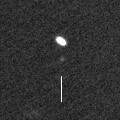
|
Now it is 15.8 mag (Sept. 24, Kunihiro Shima). It will brighten up to 14 mag from winter to spring in 2017, and it will be observable in excellent condition in the Northern Hemisphere. In the Southern Hemisphere, it keeps extremely low until November, and it will be low also around the higlight.
Date(TT) R.A. (2000) Decl. Delta r Elong. m1 Best Time(A, h)
Oct. 1 9 18.81 27 3.2 2.912 2.478 54 15.4 4:30 (260, 37)
Oct. 8 9 33.00 26 41.4 2.833 2.466 58 15.3 4:36 (263, 41)
|
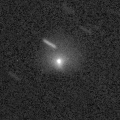
|
It has brightened in outburst up to 14 mag twice, in 2006 January and 2011 May. Third outburst occured on Aug. 28, and it brightened up to 14.8 mag (Aug. 30, Juan Jose Gonzalez). It is bright as 15.2 mag still now (Sept. 11, Thomas Lehmann). It is observable in good condition for a while.
Date(TT) R.A. (2000) Decl. Delta r Elong. m1 Best Time(A, h)
Oct. 1 1 18.38 5 55.2 5.350 6.331 167 15.3 0:40 ( 0, 61)
Oct. 8 1 15.87 5 37.1 5.348 6.344 174 15.4 0:10 ( 0, 61)
|

|
It has been lost since its discovery in 1978. In 2016, it is expected to return in excellent condition from autumn to winter.
Date(TT) R.A. (2000) Decl. Delta r Elong. m1 Best Time(A, h)
Oct. 1 19 59.76 -30 39.7 0.691 1.377 107 15.7 19:19 ( 0, 24)
Oct. 8 20 14.35 -29 35.4 0.697 1.350 104 15.5 19:06 ( 0, 26)
|

|
Now it is very bright as 15.6 mag (Sept. 11, Hidetaka Sato). It will be observable at 11 mag for a long time from 2017 to 2018.
Date(TT) R.A. (2000) Decl. Delta r Elong. m1 Best Time(A, h)
Oct. 1 3 48.69 -40 5.5 5.611 6.134 117 15.6 3:09 ( 0, 15)
Oct. 8 3 45.75 -40 35.6 5.532 6.083 119 15.6 2:39 ( 0, 14)
|
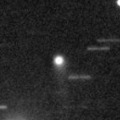
|
Now it is 15.2 mag (Sept. 23, Kunihiro Shima). It will brighten up to 14 mag from summer to winter in 2017. Then it will be observable in excellent condition in the Northern Hemisphere. In the Southern Hemisphere, it is hardly observable around the highlight.
Date(TT) R.A. (2000) Decl. Delta r Elong. m1 Best Time(A, h)
Oct. 1 23 28.96 -16 49.7 3.634 4.562 155 16.1 22:46 ( 0, 38)
Oct. 8 23 21.61 -16 20.8 3.640 4.518 147 16.1 22:11 ( 0, 39)
|
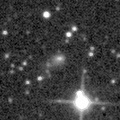
|
Now it is 16.2 mag (Aug. 31, Sandor Szabo). It will be observable at 13 mag for a long time from 2017 to 2018. In 2016, it keeps observable at 16 mag in good condition until autumn.
Date(TT) R.A. (2000) Decl. Delta r Elong. m1 Best Time(A, h)
Oct. 1 18 33.69 -9 1.6 5.601 5.699 90 16.1 19:07 ( 26, 42)
Oct. 8 18 32.16 -8 54.4 5.682 5.657 83 16.1 18:58 ( 32, 41)
|
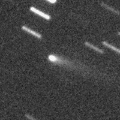
|
Now it is 14.9 mag (Sept. 24, Kunihiro Shima). It will be observable at 15-16 mag in good condition from autumn to winter. It locates somewhat low in the Southern Hemisphere.
Date(TT) R.A. (2000) Decl. Delta r Elong. m1 Best Time(A, h)
Oct. 1 4 41.32 31 58.0 1.992 2.573 114 16.2 4:02 ( 0, 87)
Oct. 8 4 44.12 32 33.4 1.931 2.586 120 16.1 3:37 ( 0, 88)
|
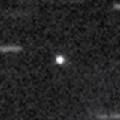
|
Now it is 16.5 mag (Aug. 25, Alexander Baransky). It will brighten up to 15 mag in winter. But it will be getting lower gradually after autumn.
Date(TT) R.A. (2000) Decl. Delta r Elong. m1 Best Time(A, h)
Oct. 1 21 59.09 -10 25.8 1.400 2.261 140 16.4 21:17 ( 0, 45)
Oct. 8 21 55.66 -9 59.9 1.418 2.220 132 16.3 20:46 ( 0, 45)
|
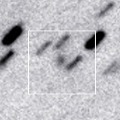
|
Now it is 16.5 mag (Apr. 5, Yasukazu Ikari). It keeps 16-17 mag for a long time from 2016 to 2019. It keeps locating near by the equator.
Date(TT) R.A. (2000) Decl. Delta r Elong. m1 Best Time(A, h)
Oct. 1 9 9.07 2 46.7 10.354 9.747 50 16.4 4:30 (286, 26)
Oct. 8 9 11.65 2 35.2 10.257 9.739 56 16.3 4:36 (292, 32)
|
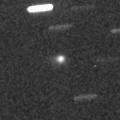
|
Now it is 16.3 mag (Aug. 31, Kunihiro Shima). It will brighten up to 13 mag and will be observable in good condition in 2017 summer. In 2016, it keeps observable until winter when it will brighten up to 15.5 mag. It locates somewhat low in the Southern Hemisphere.
Date(TT) R.A. (2000) Decl. Delta r Elong. m1 Best Time(A, h)
Oct. 1 2 54.55 31 32.8 3.502 4.276 135 16.5 2:16 ( 0, 87)
Oct. 8 2 42.34 31 16.9 3.374 4.226 144 16.4 1:36 ( 0, 86)
|

|
It brightened up to 13.0 mag in spring (May 6, Marco Goiato). It is already unobservable in the Northern Hemisphere. In the Southern Hemisphere, it will be getting lower gradually, and it will be unobservable in November.
Date(TT) R.A. (2000) Decl. Delta r Elong. m1 Best Time(A, h)
Oct. 1 15 6.82 -35 9.7 3.063 2.513 48 16.4 19:07 ( 51, -6)
Oct. 8 15 21.57 -36 4.4 3.133 2.530 45 16.6 18:58 ( 50, -7)
|

|
Now it is 17.8 mag (Sept. 24, Kunihiro Shima). It will be getting higher after this, and it will be observable at 17 mag in good condition in winter.
Date(TT) R.A. (2000) Decl. Delta r Elong. m1 Best Time(A, h)
Oct. 1 10 15.01 9 4.2 2.881 2.148 35 16.5 4:30 (270, 16)
Oct. 8 10 28.74 8 0.5 2.853 2.170 39 16.5 4:36 (274, 20)
|
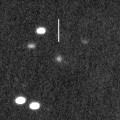
|
Now it is 18.5 mag (Aug. 11, CAO, San Pedro de Atacama). It will be observable at 16 mag in good condition from autumn to winter. It locates low in the Southern Hemisphere.
Date(TT) R.A. (2000) Decl. Delta r Elong. m1 Best Time(A, h)
Oct. 1 7 14.96 24 4.8 3.912 3.882 80 16.7 4:30 (284, 61)
Oct. 8 7 19.77 24 5.3 3.800 3.874 86 16.7 4:36 (291, 66)
|

|
Now it is 16.5 mag (Aug. 31, Sandor Szabo). It keeps 16.5 mag from 2016 to 2017. It is observable in good condition in the Northern Hemisphere. In the Southern Hemisphere, it will never be observable again.
Date(TT) R.A. (2000) Decl. Delta r Elong. m1 Best Time(A, h)
Oct. 1 16 40.70 33 6.5 6.545 6.263 69 16.8 19:07 (101, 51)
Oct. 8 16 44.07 32 52.9 6.588 6.260 66 16.8 18:58 (102, 48)
|
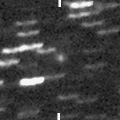
|
Now it is 16.6 mag (Aug. 4, A. Diepvens). It keeps 16-17 mag and keeps observable in good condition until autumn.
Date(TT) R.A. (2000) Decl. Delta r Elong. m1 Best Time(A, h)
Oct. 1 18 6.95 -12 37.0 2.446 2.542 83 16.9 19:07 ( 32, 37)
Oct. 8 18 15.60 -12 46.8 2.516 2.526 79 16.9 18:58 ( 34, 35)
|
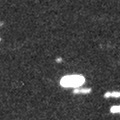
|
Now it is 17.8 mag (Sept. 1, Kunihiro Shima). It will brighten up to 15 mag and will be observable in good condition from autum to winter in 2017. In the Northern Hemisphere, it keeps observable in good condition for a long time while the comet will be brightening. It is not observable until 2017 summer in the Southern Hemisphere.
Date(TT) R.A. (2000) Decl. Delta r Elong. m1 Best Time(A, h)
Oct. 1 4 55.99 59 8.8 5.243 5.579 104 17.1 4:17 (180, 66)
Oct. 8 4 46.71 59 30.6 5.109 5.544 110 17.0 3:41 (180, 65)
|
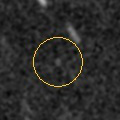
|
First return of a new periodic comet discovered in 2007. Now it is 19.4 mag (Sept. 1, K. Sarneczky, P. Szekely). It was expected to brighten up to 16.5 mag and will be observable in good condition from autumn to winter. But actually, it is fainter than predicted by 1.5 mag.
Date(TT) R.A. (2000) Decl. Delta r Elong. m1 Best Time(A, h)
Oct. 1 3 43.06 -12 5.6 1.720 2.480 129 17.1 3:04 ( 0, 43)
Oct. 8 3 42.94 -12 42.7 1.652 2.457 134 17.0 2:36 ( 0, 42)
|
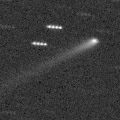
|
It brightened up to 15 mag from late 2014 to early 2016. Now it is fading slowly. Now it is 16.7 mag (Sept. 2, Kunihiro Shima). In the Northern Hemisphere, it will be observable at 16-17 mag in autumn in good condition. It locates extremely low in the Southern Hemisphere.
Date(TT) R.A. (2000) Decl. Delta r Elong. m1 Best Time(A, h)
Oct. 1 21 59.52 42 2.2 4.592 5.277 128 17.1 21:16 (180, 83)
Oct. 8 21 50.35 41 4.2 4.662 5.311 125 17.2 20:40 (180, 84)
|
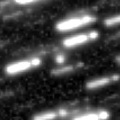
|
Now it is 16.9 mag (July 30, Yasukazu Ikari). It will brighten up to 16 mag and will be observable in good condition in 2017. In 2016, it is observable in excellent condition in the Southern Hemisphere, but it keeps low in the Northern Hemisphere.
Date(TT) R.A. (2000) Decl. Delta r Elong. m1 Best Time(A, h)
Oct. 1 18 50.85 -34 48.1 2.943 3.150 92 17.2 19:07 ( 13, 19)
Oct. 8 18 56.83 -34 8.1 3.022 3.134 87 17.2 18:58 ( 15, 19)
|
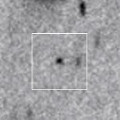
|
Now it is 18.1 mag (Sept. 23, Kunihiro Shima). It will pass the perihelion on Mar. 10, 2017. In the Northern Hemisphere, it keeps observable in the evening sky until late February while the comet will be brightening up to 8.5 mag. In the Southern Hemisphere, it will appear in the morning sky in late March at 8 mag, then it keeps observable while the comet will be fading.
Date(TT) R.A. (2000) Decl. Delta r Elong. m1 Best Time(A, h)
Oct. 1 0 19.43 14 41.3 1.429 2.418 168 17.3 23:36 ( 0, 70)
Oct. 8 0 6.02 13 43.1 1.373 2.354 165 17.2 22:55 ( 0, 69)
|
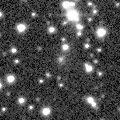
|
It will pass the perihelion in 2019. However, it has not been brightening since the discovery in 2010. Now it is 18.1 mag (Aug. 10, D. Buczynski). It keeps observable in excellent condition in the Northern Hemisphere. It is not observable in the Southern Hemisphere.
Date(TT) R.A. (2000) Decl. Delta r Elong. m1 Best Time(A, h)
Oct. 1 4 43.34 58 23.9 9.552 9.880 106 17.4 4:04 (180, 67)
Oct. 8 4 42.05 58 58.5 9.447 9.859 111 17.3 3:36 (180, 66)
|
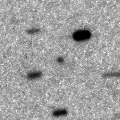
|
Now it is 17.9 mag (Aug. 28, Alexander Baransky). It will be observable at 17.5 mag in good condition in autumn.
Date(TT) R.A. (2000) Decl. Delta r Elong. m1 Best Time(A, h)
Oct. 1 22 54.25 2 41.8 1.549 2.498 156 17.4 22:12 ( 0, 58)
Oct. 8 22 51.76 2 12.1 1.563 2.474 149 17.4 21:42 ( 0, 57)
|
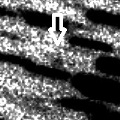
|
Now it is 18.7 mag (Aug. 4, Jean-Francois Soulier). In the Northern Hemisphere, it is observable at 17.5 mag in excellent condition from autumn to winter. It keeps extremely low in the Southern Hemisphere.
Date(TT) R.A. (2000) Decl. Delta r Elong. m1 Best Time(A, h)
Oct. 1 8 34.45 30 10.2 2.405 2.183 65 17.5 4:30 (262, 47)
Oct. 8 8 49.73 30 25.0 2.343 2.192 68 17.5 4:36 (263, 51)
|
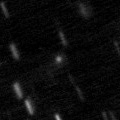
|
Now it is 18.0 mag (July 24, CAO, San Pedro de Atacama). It keeps 17 mag for a long time in 2016, and it will be observable in excellent condition in the Southern Hemisphere. It is hardly observable in the Northern Hemisphere.
Date(TT) R.A. (2000) Decl. Delta r Elong. m1 Best Time(A, h)
Oct. 1 1 24.05 -52 8.2 2.989 3.638 123 17.5 0:46 ( 0, 3)
Oct. 8 1 1.88 -51 45.6 3.030 3.663 122 17.5 23:50 ( 0, 3)
|
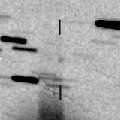
|
First return of a new periodic comet discovered in 2005. Now it is 18.9 mag (Aug. 28, K. Sarneczky, P. Szekely). In the Northern Hemisphere, it will be observable at 17 mag in excellent condition in winter. It locates somewhat low in the Southern Hemisphere.
Date(TT) R.A. (2000) Decl. Delta r Elong. m1 Best Time(A, h)
Oct. 1 4 0.79 24 4.6 2.133 2.828 124 17.7 3:22 ( 0, 79)
Oct. 8 4 1.52 24 7.6 2.060 2.825 131 17.6 2:55 ( 0, 79)
|
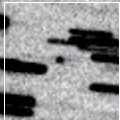
|
Now it is 18.2 mag (Aug. 25, Michael Jager). In the Northern Hemisphere, it will be observable at 17 mag in excellent condition in winter. It locates low in the Southern Hemisphere.
Date(TT) R.A. (2000) Decl. Delta r Elong. m1 Best Time(A, h)
Oct. 1 6 53.90 31 41.6 3.301 3.390 86 17.7 4:30 (271, 68)
Oct. 8 7 0.46 31 51.8 3.204 3.388 91 17.6 4:36 (276, 74)
|
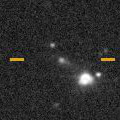
|
It is 17.3 mag now (Sept. 23, Kunihiro Shima). It was expected to brighten up to 16 mag and observable in good condition in autumn. But actually, it is fainter than originally predicted.
Date(TT) R.A. (2000) Decl. Delta r Elong. m1 Best Time(A, h)
Oct. 1 22 39.84 -11 44.0 1.828 2.735 148 17.7 21:57 ( 0, 43)
Oct. 8 22 36.66 -11 27.8 1.865 2.719 141 17.7 21:27 ( 0, 44)
|

|
It brightened up to 13-14 mag from 2014 to 2015. Now it is fading. It has already faded down to 17.1 mag (Sept. 23, Kunihiro Shima). It will be fainter than 18 mag in October.
Date(TT) R.A. (2000) Decl. Delta r Elong. m1 Best Time(A, h)
Oct. 1 23 3.55 -6 58.4 4.938 5.869 156 17.7 22:21 ( 0, 48)
Oct. 8 23 1.59 -7 17.8 5.037 5.914 148 17.8 21:51 ( 0, 48)
|
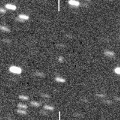
|
First return of a new periodic comet discovered in 2008. Now it is 19.4 mag (Sept. 1, Kunihiro Shima), fainter than this ephemeris.
Date(TT) R.A. (2000) Decl. Delta r Elong. m1 Best Time(A, h)
Oct. 1 20 7.12 -19 7.4 2.557 3.073 111 17.8 19:25 ( 0, 36)
Oct. 8 20 10.39 -18 56.3 2.645 3.071 105 17.9 19:01 ( 0, 36)
|

|
Peculiar asteroid with a comet-like orbit. It is observable at 18 mag in good condition in October.
Date(TT) R.A. (2000) Decl. Delta r Elong. m1 Best Time(A, h)
Oct. 1 3 15.34 -0 34.8 2.080 2.906 138 18.0 2:36 ( 0, 55)
Oct. 8 3 5.84 -4 40.9 2.023 2.904 145 17.8 2:00 ( 0, 51)
|
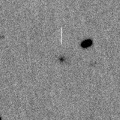
|
First return of a new periodic comet which brightened up to 16.5 mag in 2008. The condition of this apparition is very good. It was expected to brighten up to 15.5 mag in autumn and will be observable in good condition. But actually, it is 17.4 mag (Aug. 31, Kunihiro Shima), fainter than originally expected by 2-3 mag.
Date(TT) R.A. (2000) Decl. Delta r Elong. m1 Best Time(A, h)
Oct. 1 23 41.77 -12 7.5 1.364 2.333 160 17.9 22:59 ( 0, 43)
Oct. 8 23 34.34 -10 56.8 1.386 2.325 153 17.9 22:24 ( 0, 44)
|

|
Now it is 17.5 mag (Sept. 23, iTelescope Observatory, Siding Spring). It keeps 17 mag for a long time from 2016 autumn to 2017 summer, and it keeps observable good condition all through that period in the Southern Hemisphere. In the Northern Hemisphere, it will be unobservable soon, then it will never be observable again.
Date(TT) R.A. (2000) Decl. Delta r Elong. m1 Best Time(A, h)
Oct. 1 4 57.99 -31 25.5 2.401 2.867 107 18.0 4:18 ( 0, 24)
Oct. 8 4 56.35 -35 40.9 2.334 2.834 109 17.9 3:49 ( 0, 19)
|
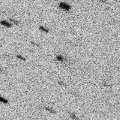
|
Now it is 17.0 mag (Aug. 31, Kunihiro Shima). It is observable at 18 mag in excellent condition in autumn.
Date(TT) R.A. (2000) Decl. Delta r Elong. m1 Best Time(A, h)
Oct. 1 1 30.95 8 10.7 1.692 2.668 163 17.9 0:52 ( 0, 63)
Oct. 8 1 26.25 7 54.7 1.691 2.684 171 17.9 0:20 ( 0, 63)
|
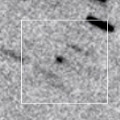
|
Now it is 18.6 mag (Aug. 31, Kunihiro Shima). It is observable at 18 mag in excellent condition in autumn.
Date(TT) R.A. (2000) Decl. Delta r Elong. m1 Best Time(A, h)
Oct. 1 1 0.54 3 19.3 1.618 2.614 172 17.9 0:22 ( 0, 58)
Oct. 8 0 55.65 3 2.9 1.626 2.624 177 17.9 23:45 ( 0, 58)
|

|
It keeps observable at 17.5 mag in good condition from autumn to winter.
Date(TT) R.A. (2000) Decl. Delta r Elong. m1 Best Time(A, h)
Oct. 1 3 42.70 18 45.4 2.365 3.108 130 18.0 3:04 ( 0, 74)
Oct. 8 3 42.10 18 32.8 2.291 3.101 137 17.9 2:35 ( 0, 74)
|
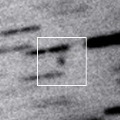
|
Now it is 17.4 mag (July 2, G. Gunn, G. W. Christie). It keeps observable at 17.5 mag in good condition from spring to autumn in the Southern Hemisphere. It is not observable in the Northern Hemisphere.
Date(TT) R.A. (2000) Decl. Delta r Elong. m1 Best Time(A, h)
Oct. 1 18 5.53 -54 48.0 4.974 4.969 83 17.9 19:07 ( 15, -2)
Oct. 8 18 13.07 -53 59.3 5.062 4.971 79 18.0 18:58 ( 16, -2)
|
|
![]()
 315P/2013 V6 ( LONEOS )
315P/2013 V6 ( LONEOS ) 174P/(60558) 2000 EC98 ( Echeclus )
174P/(60558) 2000 EC98 ( Echeclus ) D/1978 R1 ( Haneda-Campos )
D/1978 R1 ( Haneda-Campos ) C/2016 R2 ( PanSTARRS )
C/2016 R2 ( PanSTARRS ) C/2016 N4 ( MASTER )
C/2016 N4 ( MASTER ) C/2015 O1 ( PanSTARRS )
C/2015 O1 ( PanSTARRS ) 56P/Slaughter-Burnham
56P/Slaughter-Burnham 93P/Lovas 1
93P/Lovas 1 C/2014 B1 ( Schwartz )
C/2014 B1 ( Schwartz ) C/2015 VL62 ( Lemmon-Yeung-PanSTARRS )
C/2015 VL62 ( Lemmon-Yeung-PanSTARRS ) 77P/Longmore
77P/Longmore 118P/Shoemaker-Levy 4
118P/Shoemaker-Levy 4 74P/Smirnova-Chernykh
74P/Smirnova-Chernykh C/2014 OE4 ( PanSTARRS )
C/2014 OE4 ( PanSTARRS ) 219P/LINEAR
219P/LINEAR C/2015 V1 ( PanSTARRS )
C/2015 V1 ( PanSTARRS ) P/2016 R1 ( Catalina )
P/2016 R1 ( Catalina ) C/2014 A4 ( SONEAR )
C/2014 A4 ( SONEAR ) 47P/Ashbrook-Jackson
47P/Ashbrook-Jackson 2P/Encke
2P/Encke C/2010 U3 ( Boattini )
C/2010 U3 ( Boattini ) 343P/2016 P3 ( NEAT-LONEOS )
343P/2016 P3 ( NEAT-LONEOS ) 33P/Daniel
33P/Daniel C/2015 B2 ( PanSTARRS )
C/2015 B2 ( PanSTARRS ) P/2016 Q1 ( Read )
P/2016 Q1 ( Read ) P/2015 TP200 ( LINEAR )
P/2015 TP200 ( LINEAR ) 188P/LINEAR-Mueller
188P/LINEAR-Mueller C/2012 F3 ( PanSTARRS )
C/2012 F3 ( PanSTARRS ) 340P/2016 N2 ( Boattini )
340P/2016 N2 ( Boattini ) 2016 PN66
2016 PN66 338P/2016 N1 ( McNaught )
338P/2016 N1 ( McNaught ) C/2016 S1 ( PanSTARRS )
C/2016 S1 ( PanSTARRS ) 341P/2016 N3 ( Gibbs )
341P/2016 N3 ( Gibbs ) 208P/McMillan
208P/McMillan 128P/Shoemaker-Holt 1
128P/Shoemaker-Holt 1 C/2015 H2 ( PanSTARRS )
C/2015 H2 ( PanSTARRS )![]()
















































